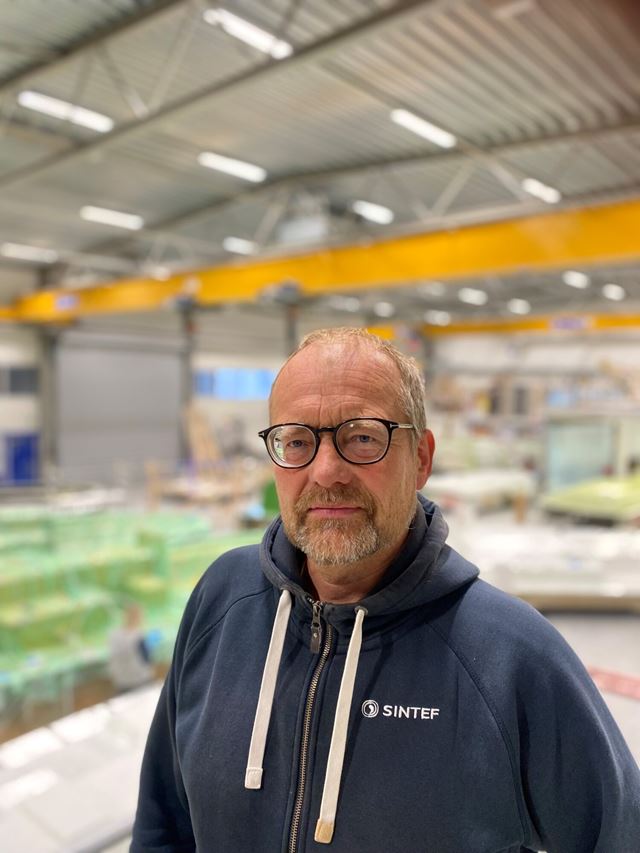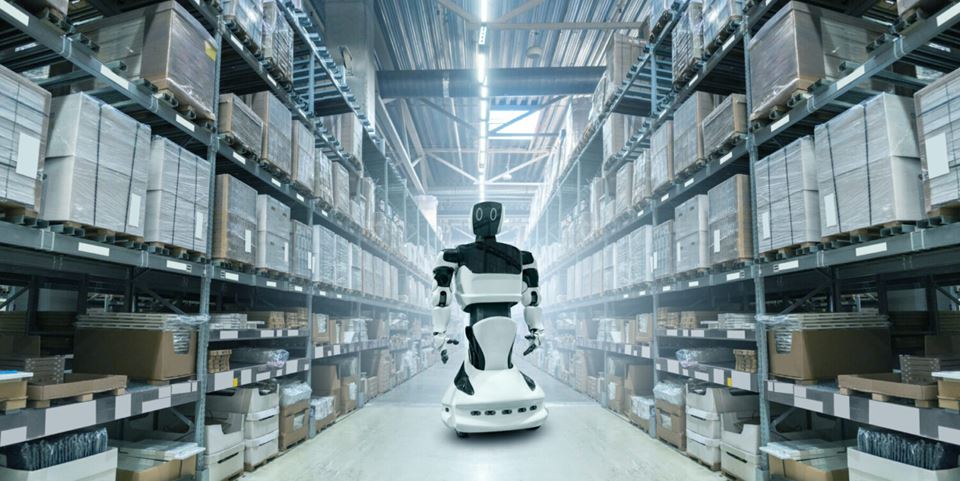Industrial development is still moving towards a future in which processes are driven to an ever-increasing extent by machines and artificial intelligence. But what roles will people be playing in all this?
If we are to believe what researchers are saying, we will not be as irrelevant as many had feared.
“To a great extent, Industry 5.0 is all about putting people back in control”, says Bjørnar Henriksen at SINTEF. “People shall move increasingly from being shop floor workers to strategists and decision makers, although human operatives will not disappear entirely”, he says.
Is this a paradigm shift?
Henriksen is a Senior Research Scientist at SINTEF Digital and is currently working on one of the very first research projects linked to the fifth industrial revolution – Industry 5.0. SINTEF is working together with Norwegian industrial companies and other research centres.
“The term Industry 5.0 has been introduced to our terminology as a concept during the last five years”, says Henriksen. “Even if the process has been in part research driven, it’s also been linked to developments occurring in industry, where we’re seeing that Industry 4.0 is missing something which is preventing things from functioning optimally”, he says.
“Industry 5.0 will put the spotlight back on people”, says Henriksen. “Perhaps we can call this a paradigm shift. We’re turning things around, changing course a little and readjusting”, he says, before going on to add:
“Naturally people have always been there, but now we have to work out where the new initiatives will come from, and who will be managing the processes. The users will be calling the shots”, he says.
Industry 5.0 also addresses the need to safeguard employees’ working conditions as best as possible, and to ensure that they are empowered to influence day-to-day operations to a much greater degree by means of taking active decisions during the production process.

Bjørnar Henriksen in the moulding plant at the company Viknes Båt og Service AS. The photo was taken in connection with the project ‘Transformasjon til el-båt’’ (Transformation to electric boats). Photo: Kristian Sivertsen
“For example, this may apply to environmental issues”, explains Henriksen. “It may be possible to do things smarter or more practically. But this will also give employees the opportunity to participate in strategic processes, which up until now has traditionally been the sole preserve of management”, he explains, before going on to add:
“Industry 5.0 also welcomes the client into the fold. Clients shall be involved so that products and services can be better adapted to their needs and those of the end users.
Founded on three main components
- Firstly, there is a need for resilience. To a great extent, this addresses our ability to deal with uncertainty and crises – and we have experienced more than enough of these in the last few years. Examples of resilience include not only flexibility in production and value chains, and the use of module-based products and production systems, but also different approaches to digitalisation.
- Secondly, Industry 5.0 places a greater focus on people than is the case in Industry 4.0. This addresses the idea that employees and clients/product users shall develop strategies and make decisions to a much greater extent than previously when it comes to what and how products shall be produced. Such decisions may relate not only to employees’ day-to-day working conditions in production settings, and the selection of technology/digitalisation approaches, but also their participation in larger scale strategic processes and choices.
- Thirdly, we must address sustainability. Sustainability is exerting an ever-increasing influence on decision-making in industry. This is being reinforced as part of Industry 5.0 since both sustainability and high-level demands from wider society shall increasingly become the driving forces for corporate strategic and operational thinking.
Shifting the balance of power
“Getting all this done not only requires that employees are given access to the tools, methods and systems that enable them to take decisions, but also that companies gradually work consciously to adapt their organisations and corporate cultures, and to qualify employees for new roles”, says Henriksen, who goes on to add:
“In practice this means that employees must have access to relevant information, effective decision support, and systems that can assist them in taking their decisions”, says Henriksen. “As an example, management must learn to accept that decision-making is being transferred from them to their employees”, he says.
In brief: while Industry 4.0 makes it possible for a company to access data and facts using tools such as sensors and the Internet of Things, Industry 5.0 is more concerned with ensuring that employees or people in and around the company are able to utilise this information in the best possible ways.
Agricultural pilot project
While the idea behind Industry 5.0 appears to be quite logical, it is perhaps also a little difficult to tie down.
Making the entire concept of Industry 5.0 more tangible and practical is one of the aims of a new research project called ‘Fremtidens Fôrsystem – Industri 5.0 for en bærekraftig agri-industri’ (Tomorrow’s feed systems – Industry 5.0 for a sustainable agri-sector), which is being coordinated by SINTEF.
The aim of the researchers is to assist in building a platform, or toolbox, intended to help the agricultural companies Orkel (which is acting as project manager) and TKS Agri to put the ideas behind Industry 5.0 to work. The approach being used by the researchers is so-called ’action research’, by which they will be working closely with company employees. The project is being funded by the Research Council of Norway with the aim of developing a smart feed system for tomorrow’s agricultural industry that is more sustainable than current methods.
A toolbox
The UN’s Intergovernmental Panel on Climate Change has indicated that major challenges such as droughts and variable harvests may result in more frequent feed supply crises.
“Our clear ambition is that the project will result in a better feed system that will improve the lives of farmers and help towards the development of effective systems that will alleviate these crises, while also taking the environment into account”, says Henriksen.
He envisages a problem in that not everyone can, or wants to, be a decision maker. So, clearly, one of the challenges will be to find out how much can we demand of the people who are going to utilise the new methods.
“It may also be difficult to get the companies and organisations to commit to the idea. After all, for many it will involve a major change in organisational culture”, says Henriksen. “It will be exciting in two or three years’ time to hear about the users’ experiences of the project after using our methods and tools for a while”, he says.


